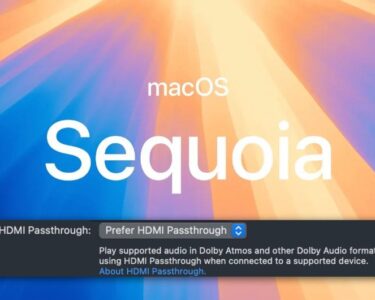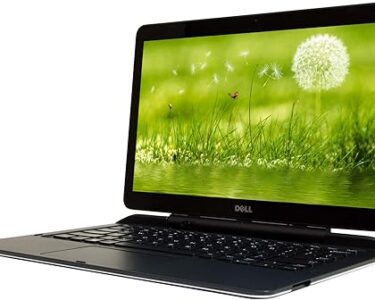Although this is Apple’s least expensive portable Mac, in terms of performance, it barely differs from its desktop cousins. With the release of the Apple MacBook M3, the Mac continues its revolutionary path that started with the M1, moving further away from Intel processors and toward a new, quiet, efficient computing environment. The M3 Air has a remarkable battery life, is lightweight, slender, and has a 15-inch screen that is large enough for most applications. It is also absolutely silent when in use. Although the M3 Air is an excellent laptop for professionals in the creative industry, it may be lagging behind in terms of innovation.
KEY SPECIFICATIONS
- CPU: Apple M3, eight cores
- GPU: Integrated, 10 cores
- RAM: 16GB
- Storage: 500GB SSD
- Screen: 15.3in IPS, 2880×1864 pixels
- Connectivity: 3x Thunderbolt 3/USB 4 Type C, MagSafe charging, Wi-Fi 6E, Bluetooth 5.3 , 3.5mm headphone port
- Dimensions: 1.15cm x 34cm x 23.76cm
- Weight: 1.51kg
APPLE MACBOOK AIR M3 REVIEW: DESIGN AND BUILD
The 15-inch M3 MacBook Air for 2024 bears a striking resemblance to previous models in the line. 13-inch variants are still available, while an M2 version of the smaller notebook is still accessible. There are no strange cutouts, glowing lights, or attempts to be ostentatious. As the third major iteration of the M chip, the Air knows it’s good and doesn’t need them or show off .Thus, you essentially get the same body as the M2 Air, with the more robust, slab-sided case replacing the outdated wedge-shaped design. In order to make Air owners feel better about choosing the less expensive choice, it looks excellent and blends in with the Pro series.
The Performance section below will show you that the Air is not the inferior version of the Pro. A key component of the design is that this processor can compete with a 13th-generation Intel Core i7 without requiring the PC’s cooling fans. In the event that the chip does not need to be actively cooled, fewer internal cavities and moving parts are required. As a result, the Air becomes narrower, denser, and stiffer. It’s still small enough to fit in an envelope, measuring 1.15 cm (less than half an inch) across, although we wouldn’t advise mailing it that way. Apple also says that, in spite of its name, the Air shouldn’t be kept over 15,000 feet.
In addition, the 15-inch form factor is more practical than the 13- or previous 11-inch devices. The screen doesn’t feel small when you move application windows around, and the trackpad is big enough that, once you adjust the setting to allow you to tap and click more effectively (we’re not sure why Apple turns this off by default), you can start to question if you really need a wireless mouse companion. You can use it on your lap and type without worrying that your wrists will fall off the sides. In addition to the basic Silver and Space Grey, our review model is also available in the golden Starlight color. Even though the laptop’s back screen no longer displays the Apple logo when it’s powered on, this is unquestionably a current Mac—it’s just thinner.
DISPLAY, KEYBOARD AND TRACKPAD
With a resolution just shy of 1440p, a 16:10 aspect ratio that lets you keep the Dock on the screen without it taking up too much space in your workspace, and a unique notch at the top to house the cameras, the 15-inch screen is a mini-LED IPS. Apple is masters at touchscreens, but the Mac has never seen one. Those coming from Windows PCs might not understand the strange peculiarity with the display—the Air can only support two displays at once. That’s one external screen and the laptop’s internal display, or two external displays when the lid is closed. Although it’s an odd restriction, it’s still preferable to the M3 MacBook Pro’s single external screen drive. To drive two monitors, you will need the M3 Pro model; to attach three displays, you will need the Max chip.
The 15-inch Air keyboard features full-size function keys, and no effort has been made to add a numpad where it doesn’t fit, making it an excellent keyboard to type on. It is robust and travels well, and the scissor switches make a nice click sound beneath the keys. There is a fingerprint scanner on the power button, however sometimes you will still need to input your password.
There is ample room for charging, connecting adapters, and connecting USB-C peripherals thanks to the two USB ports, one of which is Thunderbolt 3 and the other a MagSafe charging connector. Although Thunderbolt 4 is a disappointment, the 40Gbit/s transfer rates are more than sufficient, and it is really handy to be able to connect almost any USB-C tablet charger to the Air for a quick top-up.
PERFORMANCE
The M3 squeaks over the Intel i7-14700HX in the single-core test of Geekbench, but lags somewhat in the multi-core exercise. That’s hardly surprising, though, because it’s eight cores against 20 cores and 20W versus 55W. The M3’s integrated GPU falls short of a dedicated Nvidia chip in the rigorous Cinebench 2024 rendering test, even with all of Apple’s enhancements; the entry-level RTX 3060 laptop chip doubles its performance in this test.
The Apple M3 is capable of easily defeating the M1 in every test, with the exception of the core-heavy Max and Ultra varieties, which are only good for single-core performance. This means that M1 owners who are growing restless with their three-year-old laptops may want to consider upgrading to the M3. It must be seen to be believed if you are still carrying an Intel Mac. The M3 is in exceptional company when it comes to single-core benchmark tests; it is ranked alongside CPUs such as AMD Ryzen 7 chips and Intel i9s. From an Arm CPU with no fan at all? Apple might have a valid point here. It is unable to compete with the 24-core (and beyond) beasts in the multicore testing.

The Air’s passive cooling system has a drawback in that the processor will reduce performance if you push it too hard in order to prevent overheating. It warmed up a little underneath during our tests when we pushed the chip, but there were no really hot spots, and it was pleasant to hold on your lap. Regular users won’t find this problematic, and those that require that kind of performance for rendering are probably better off purchasing a MacBook Pro or Mac Studio in order to utilize the additional core counts.
MacBook Pro anyway to benefit from the more core counts that are offered. The Air doesn’t record benchmark scores as high as its actively cooled range-mates, which is a factor if you intend to use it as a gaming machine, but the trade-off for a completely silent laptop is attractive. The SSD in the MacBook Air M3 can transmit data at about 3,000Mbps in both ways, which isn’t as fast as the top PCIe 4.0 SSDs but sufficient for 8K ProRes video, according to the Blackmagic disk speed test. Additionally, the Mac boots up to the login page in a mere 10 seconds and resumes sleep mode without any issues, even after being left unattended for a weekend.
MACBOOK AIR M3: SHOULD I BUY IT?
You don’t always purchase a low-end Mac to hammer out deadlines; the Mac Studio and MacBook Pro are meant for such purposes. One is for the operating system and the ways it differs from Windows. Without any fancy hinges, touchscreens, or different display modes, the Air is just a basic laptop. If you’re searching for laptop innovation, Windows laptops like the Asus Zenbook Duo might be more appealing. This summer, challengers in the form of new Windows laptops with Snapdragon CPUs are probably on the way, and they should challenge the Mac in terms of power versus battery life.But because they’re not here yet, the M3 Air is still a great option if you don’t mind spending £1,499 or more on a laptop without a separate GPU chip because it offers great portability, long battery life, and processing power in one package.




